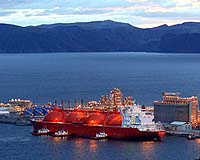 |
New Orleans, Louisiana (AFP) July 26, 2010 Louisiana's fragile marshes should recover from the Gulf of Mexico oil spill in a matter of months and the environmental impact will be "quite small," a leading expert said Monday. The upbeat assessment of the damage from the Deepwater Horizon oil disaster came from geologist Ed Owens, a world authority on protecting shorelines from oil spills contracted by BP to lend his expertise to the response effort. "It's a very, tiny, tiny fraction of what's spilled has actually reached any of the shorelines in the area, which means that the environmental impact in terms of the coastal side of it is quite small," Owens told AFP. "Because of the nature of the oil, we expect that the recovery will be very much in a matter of months to a year at the most. We're not talking about years or decades here as has been the case for other spills in the United States." The assessment from Owens flies in the face of research from other leading scientists who have warned of a decades-long effect on marine life that could lead to a shift in the overall biological network in the Gulf of Mexico. Doug Inkley, a senior scientist at the National Wildlife Federation, warned recently that the more than 2,600 dead birds, mammals and turtles found by BP and the US government could be just the tip of the iceberg. "You could have a (population) crash later because of the failure of many of the young to survive this year," said Inkley. "The impacts on wildlife I expect will last for years, if not decades." But Owens said most of the oil had dispersed naturally in the weeks it took to reach shore and that skimming, burning and the use of dispersants had all contributed as had the strong outflow at the Mississippi River Delta. "If we measure it in terms of area we are talking way less than 100 hectares (247 acres), and so the scale of the problem is not as vast as one might think given the amount of oil that has been spilled," he said. That area represents some 100 kilometers (62 miles) of Louisiana's 7,000 kilometers of wetland coastlines, a favorite breeding ground for hundreds of species of rare birds and marine animals and an important natural buffer zone for hurricane-prone New Orleans. The marshes have to be cleaned painstakingly from the water by boat as walking through them or driving on them in vehicles does more damage than the actual crude. Owens, who was the technical advisor to Exxon's clean-up teams on the Exxon-Valdez oil spill in Alaska from 1989 to 1993 and has been involved with oil spill response and research since 1970, has worked in Louisiana's wetlands before. He said he did not expect the sequence of events in this spill to be any different from the past: the oil on the stems of the marsh vegetation will fall with the stems as they start dying in September and become biological litter. "That litter is attacked by microbes and bacteria through the winter months and they break it down and it forms sort of the nutrient base if you like for the regrowth in the spring," he told AFP. "And so it biodegrades with the stems as they also biodegrade and in the spring the expectation from this event... is that there will be regrowth without the presence of oil." Owens said the challenge for his clean-up teams will be any larger lumps of tar that get deposited on parts of the marsh that will not break down as readily and as quickly as oil that's on the stems. "Right now we're not touching them, but it will be part of our plan once we move into this phase when there's no further threat of oil from offshore. "When we decide at that point what further clean-up we will be recommending, areas that have tar that may smother the plants and prevent regrowth will be addressed in terms of cleaning recommendations," he said.
Share This Article With Planet Earth
Related Links Powering The World in the 21st Century at Energy-Daily.com
 China's demand for LNG to soar
China's demand for LNG to soarEdinburgh, Scotland (UPI) Jul 26, 2010 Fueled by its soaring demand for energy, China's demand for liquefied natural gas will increase by 48 percent in 2020 and is driving Pacific LNG growth, says a new study. "Race for Supply - the Future of China's Gas Market," by Wood Mackenzie Consultants finds that China's reliance on unconventional gas - particularly shale - will increase significantly to meet its strong gas growth. ... read more |
|
| The content herein, unless otherwise known to be public domain, are Copyright 1995-2010 - SpaceDaily. AFP and UPI Wire Stories are copyright Agence France-Presse and United Press International. ESA Portal Reports are copyright European Space Agency. All NASA sourced material is public domain. Additional copyrights may apply in whole or part to other bona fide parties. Advertising does not imply endorsement,agreement or approval of any opinions, statements or information provided by SpaceDaily on any Web page published or hosted by SpaceDaily. Privacy Statement |